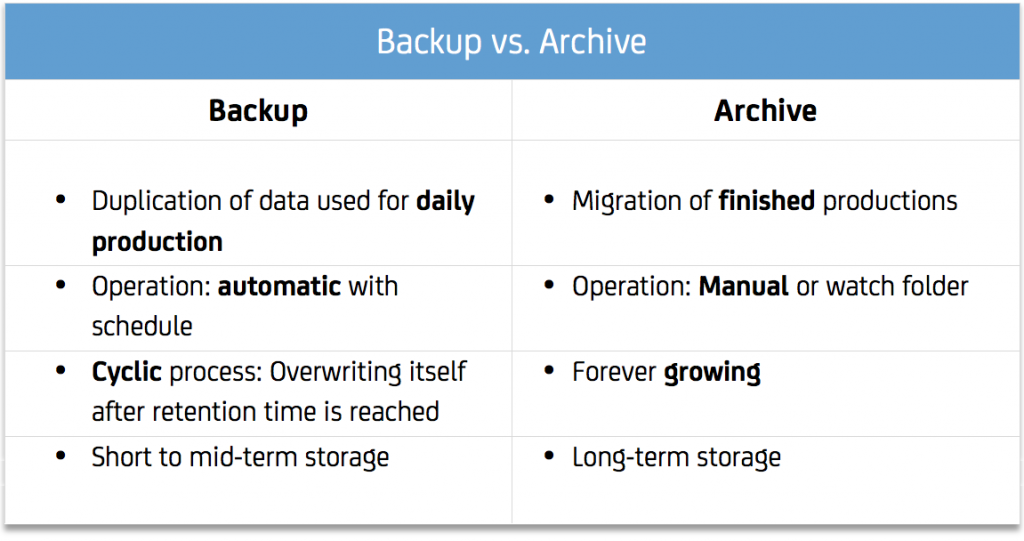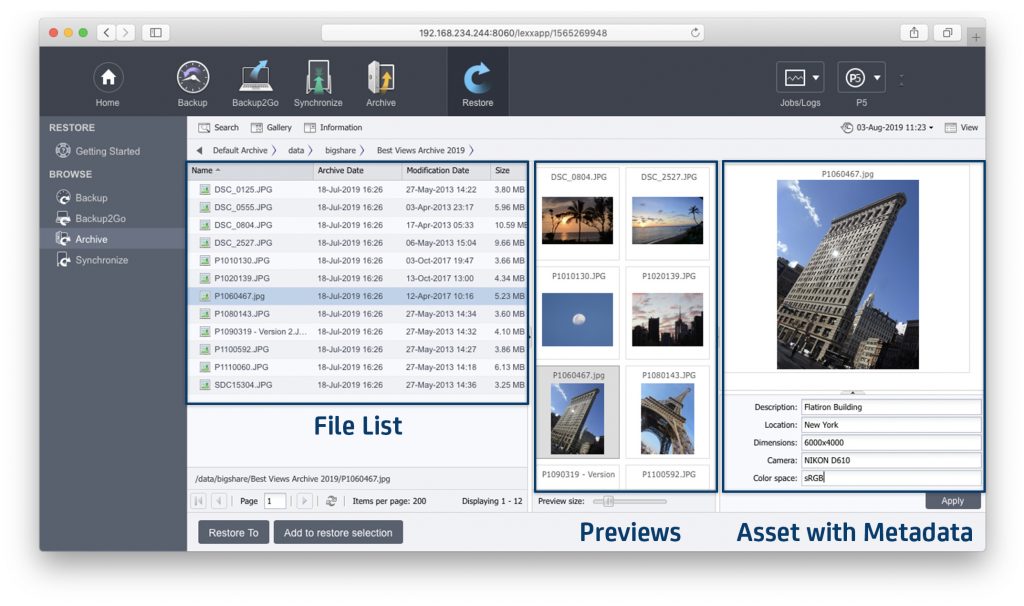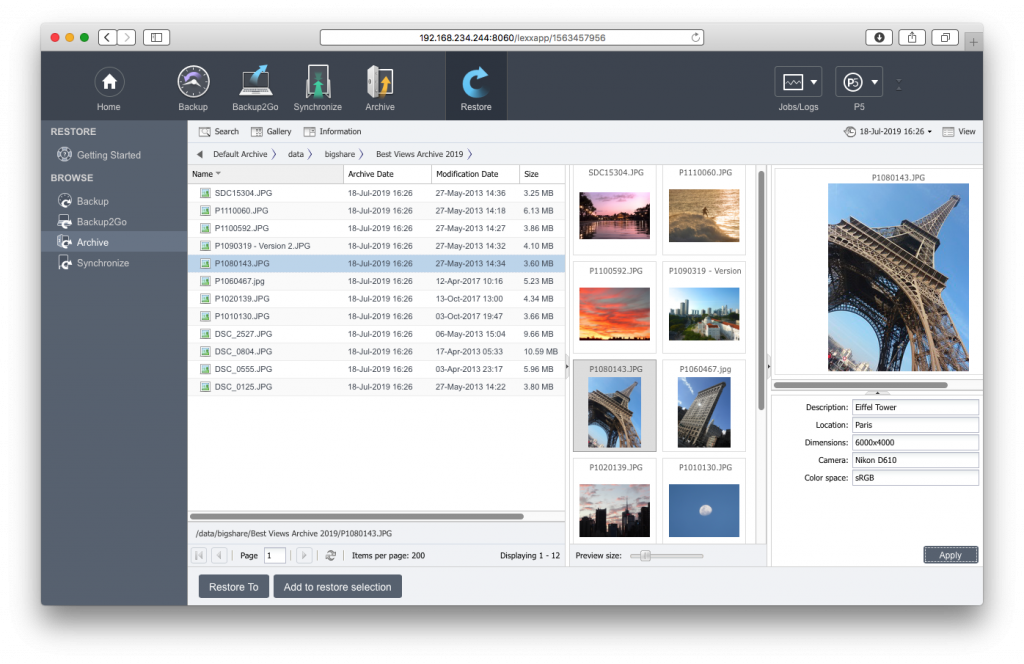
By Dr. Marc M. Batschkus
If a vendor of a Backup and/or Archive solution ceases operation, there are many open questions among users of their software and sometimes even slight panic. With the recent closure of Tolis Group, this is now happening to BRU and ArGest users. Some of the questions that arise are:
- Can I access my files and for how long will this continue?
- Is it safe to continue using the solution?
- What to do with previously written BRU or ArGest tapes?
- What is the best way to handle the situation and move forward?
- How to migrate BRU or ArGest to another solution?
- What might be gained from moving to a different product/solution?
- How to plan a migration from BRU or ArGest?
Let us begin by offering some assurance: the software you purchased is still operating and will probably continue to do so if nothing is changed. Since there is no further development and support, it makes sense to keep the current machine with the ‘orphaned’ solution as-is. No updates of any kind should be performed, no additional software/OS installations, nothing that could stop it from being operational as it is now.
Think of it as a toaster. It does one thing only and that should not change. In this case, it keeps your files available if needed. There is actually not much of a difference if you decide to stop working with one solution, if the vendor discontinues it or if they go out of business. In all cases it needs to be kept operational for the time being and plans made for a migration.
Let’s have a quick look at the difference between Backup and Archive.

The easiest case in the migration of BRU is the Backup. Since a Backup is a duplication of all files currently used for production, it can be re-run with a new solution as soon as it is installed.
With Archive it is more complex since there might be dozens or even hundreds of tapes already written. Getting a new archive solution in place, allows you to continue archiving completed assets and projects. There were good reasons that made you start archiving in the first place. They still hold true:
- Reducing load and space on your production storage
- Preserve projects and assets for long-term
- Use LTO tape because of durability and the lowest cost per TB.
As an alternative to BRU and ArGest we offer a look at Archiware P5 Archive.
Archiware P5 Archive adds MAM like features to the Archive:
- Customisable metadata fields
- Combined search
- Thumbnails of images
- Proxy clips of videos
Additionally, later migration from one LTO generation to the next is supported and built-in. Plus, the complete set of Archive, Backup and Cloning/Replication is covered by the P5 suite in one solution with one interface. Protecting all assets during the complete workflow and after completion becomes seamless and easy.
In particular, P5 Archive’s easy to use catalog with customisable metadata fields, helps to build a “Single Source of Truth” for production data. Finding files becomes really quick, since there is only one place to search – the archive index. This alone saves time for searching and supports re-use, reference and returning customer´s expectations.
Steps to deal with the discontinued BRU/ArGest situation?
1. Stop archiving with your BRU and/or ArGest software.
Continuing to use it increases the risk of losing files if it stops working for any reason. Since the software is no longer supported, it does not make sense to entrust additional data to it.
2. Treat all previously written tapes with due respect and carefully observe the recommended specification for their storage (temperature and humidity).
Keep them physically safe and away from the active storage infrastructure. This way they will last as long as possible.
3. Start your calculations to find out what you need.
- How many files of what total size have you archived per month (or per year)?
- What volume do you expect to archive in the future?
- What are your current and future needs?
- What level of security do you need (like redundant tape sets and off-site storage)?
- How much would it cost to re-shoot material and as a consequence, what budget do you need for long-term protection?
Even if you haven’t restored frequently from your existing archive, this may change considerably once you have a MAM-like catalog available with the custom metadata schema that P5 Archive provides. Now the Archive can really contribute to production, support requests of returning customers and make re-use of assets quick and easy.

4. Now that you start a new Archive, ask yourself who will be using the archive and how?
What do you need in terms of metadata fields in the catalog? If more people are involved, document use cases to discover metadata needs and workflow implications.
5. What storage medium is best, moving forward, disk, tape or cloud?
Since you are starting a new Archive, it might make sense to revisit this question. While disk storage is relatively cheap, storing it for long-term is risky and outside of the specification of spinning disks. It works well though for time limited archives that are only kept for months or a year.
Cloud storage gives extreme flexibility as it can be expanded any time and does not require any hardware to be installed. Access speed for upload and download varies considerably depending on region. Cost starts low but grows as more storage is needed. Even if not accessed at all, there are fees to pay.
Tape storage is the most durable of all. It has a (proven!) shelf life of decades. Several security layers protect the data. Read-after-write guarantees that all files are on the tape that are transferred to it. Error correction assures that even possible dropouts are accounted for. Auto-speed takes care that the tape and drive are streaming at the optimum speed. The price point of about 10USD/EUR per TB is unbeatable. A tape archive grows extremely easily by simply adding more tapes. There are good reasons that most big corporations, banks, insurers and IT companies use tape to keep massive amounts of data for long-term.
6. Re-think your file name conventions
Metadata are important. They hold information about the files and become the key when finding files later, sometimes years after production. The filename is the most robust place for metadata. It is readable on all file systems and operating systems, gives a quick orientation of what a file is and can prevent mishaps. Starting a new archive is an opportunity to build a file name convention that suits your needs best. For a systematic approach see this article.
7. Building a new archive and migrating files also offer the opportunity to transcode material that is encoded in legacy codes.
This list gives a good overview of codecs that should be considered ‘legacy’.
One way to locate these files is through the use of a production tool, such as KYNO, which has a legacy filter to find and transcode them to a newer format.
KYNO also has an integration with P5 Archive.
8. Observe typical access of the legacy archive – how often do you need files need to be restored?
This gives some indication as to the necessity of migrating existing tapes to the new solution.
- If you access the legacy archive rarely, the best approach might be to keep it as-is and build a new archive for new content.
- If you access it more frequently it might be helpful to migrate the archive starting from the most recent content and moving to the oldest. You can restore and re-archive in batches or tape-by-tape depending on resources and urgency. This way only limited disk storage is needed to hold contents of one or more tapes before it gets archived again with the new solution like P5 Archive.
Migrating previously archived material offers the opportunity to add metadata, thumbnails and proxy clips. Browsing and finding files becomes a lot easier this way.
Switching from Tolis BRU/ArGen to Archiware P5 Archive brings a number of benefits with it.

Additionally, P5 Archive supports LTO drives and libraries from all vendors. More vendors than ever offer LTO desktop drives with a Thunderbolt interface, for direct connection to a Mac or PC: mLogic, MagStor and OWC. When using tape libraries, multiple drives can be used for drive parallelization to maximise throughput. When using two drives (either stand-alone or in a library) tape cloning can be used to generate two identical tape sets for maximum security, redundancy and off-site storage.
One more feature makes Archive and restore exceptionally easy with P5, the P5 Companion that offers drag and drop operation. By dragging one or several files on the P5 Companion window they are archived. This works with archive to disk, to tape and to cloud in the same way. The resulting “stub” file can be put away and offers the link back to metadata of the archived file, the proxy clip and the option to restore it.
Learn more about the P5 companion and drag-and-dop archiving and restore:
https://p5.archiware.com/products/p5-companion-app
Taking the right steps to start a BRU or ArGest migration makes the situation easy to handle. Accepting the opportunity to fine tune the workflow, customise a metadata schema and build a MAM-like media archive with P5 Archive supports production, saves time and keeps all finalised files in easy reach for re-use, repurposing, reference and the requests of returning customers.
Get 50% Off on All Archive Installations with a BRU Trade-In
Providing future-proof data management for BRU customers, Archiware offers a 50% trade-in discount on all archive installations until March 31st, 2021.
The 50% discount is granted for a complete, one-time order of Archiware P5. The trade-in special covers the cost of an entire installation, including slot and storage licenses. Additionally, the discount is not limited to the cost of the BRU or ArGest installation that is being replaced.
Archiware offers a full-featured free 30-day trial license to test all modules of P5:
- P5 Synchronize – Replicate data to ensure high availability
- P5 Backup – Back up server data to disk, tape and cloud
- P5 Backup2Go – Back up desktop and laptop data to disk
- P5 Archive – Move or migrate data offline to disk, tape and cloud

